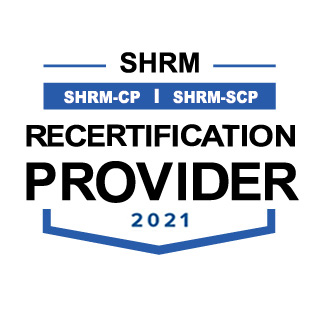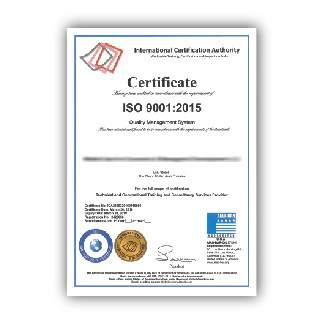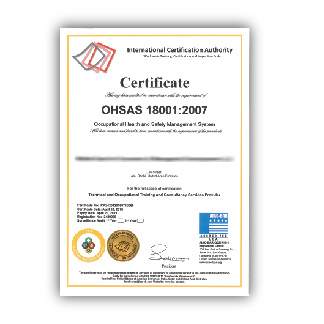Applied Petrophysics for Low Resistivity Thin– Bedded Formation
| Start Date | End Date | Venue | Fees (US $) | ||
|---|---|---|---|---|---|
| Applied Petrophysics for Low Resistivity Thin– Bedded Formation | 30 Nov 2025 | 04 Dec 2025 | Dubai, UAE | $ 3,900 | Register |

Applied Petrophysics for Low Resistivity Thin– Bedded Formation
| Start Date | End Date | Venue | Fees (US $) | |
|---|---|---|---|---|
| Applied Petrophysics for Low Resistivity Thin– Bedded Formation | 30 Nov 2025 | 04 Dec 2025 | Dubai, UAE | $ 3,900 |
Introduction
Thin bedded reservoirs are increasingly common exploration targets. However, evaluating such formations is difficult due to challenging and sometimes misleading data.
This program will cover all aspects of Petrophysical analysis in thinly bedded reservoirs and will train attendees to select the best interpretation techniques based on the data available and the known characteristics of the formation.
This course focuses on different techniques in tackling various types of thinly bedded reservoirs, including laminated sand shale sequences, thin layers of different types of clean sands and thin beds in carbonates.
Objectives
IDENTIFY POSSIBLE HC POTENTIAL FOR THIN BEDDED SEQUENCES:
Learn the Petrophysical techniques in interpreting log data from low resistivity, thin-bedded sequences in order to identify possible HC sources.
CHARACTERIZE VARIOUS TYPES OF THINLY BEDDED RESERVOIRS:
Analyze various determining characteristics of thinly bedded reservoirs such as that in laminated sand shale sequences, in cleans sands, and in carbonates.
UNDERSTAND THE CHALLENGES IN DETECTING PAY ZONES & THEIR ACCURATE EVALUATION:
Identify the challenges and pitfalls in detecting pay zones in thin-bed reservoirs and their accurate evaluation. APPLY THE RIGHT TECHNIQUES FOR EVALUATING THIN BED RESERVOIRS:
Identity in which logging techniques have been useful, what have been most successful, and the available technologies that can help better evaluate these reservoirs.
Training Methodology
The program is delivered in a combination of lecture-style and practical experiential learning method is results-oriented; based on an adult learning concept. The course is designed as a blended environment of presentation; workshops; group work; practical exercises; field application/ case studies, analysis and several industry videos showing all processes; and general discussions. The course will include real case studies in the oil and gas industry. Most of the case studies have been presented in international journals by the instructor. Pre & Post-course assessments will be used to measure the effectiveness of this training and measure the skill and ability of participants.
Who Should Attend?
- This program is developed for those who are working on interpreting log data from low resistivity, thin-bedded sequences
- This program is also for those who will benefit from understanding the analysis of Petrophysical data during exploration and development stage
Job Titles Include:
- Petrophysicists
- Log Analysts
- Exploration Geoscientists
- Development Geoscientists
- Subsurface Managers
Course Outline
DAY 1: THE THIN BED PROBLEM
- The Geology of Thin Beds – Laminated Shaly Sands And Other Types Of Thin Beds
- What the Petrophysicist Is Trying To Achieve When Assessing Thin Beds
- Uncertainty in Results And Reserves Estimates
- Log Measurements in Thin Beds
- Why Are The Resistivity Logs So Low?
CONVENTIONAL, HIGH RESOLUTION, AND IMAGE BASED TECHNIQUES
- Conventional Interpretation Techniques Using Shaly Sand SW Equations
- Introduction To Petrophysical Modelling
- High-Resolution Resistivity Modelling
- Image-Based Petrophysics
- Results Reporting In Thin Beds
DAY 2: ELECTRICAL ANISOTROPY AND HOW IT IS MEASURED
- Why Measure Vertical Resistivity?
- How Are Vertical Resistivities Measured?
- What to Do If No Tri-Axial Resistivity Measurements Have Been Made
DAY 3: TRI-AXIAL RESISTIVITY INTERPRETATION
- Different Interpretation Techniques Available Using Horizontal and Vertical Resistivities
- Laminated Shaly Sand Analysis (LSSA) For Interpreting Horizontal And Vertical Resistivity
- Uncertainty Revisited And Why LSSA Has Low Uncertainty
DAY 4: ANISOTROPIC FORMATIONS AND RESERVOIR MODELING
- Different Types of Petrophysical Modelling
- Low-Resolution 3dmodelling
DAY 5: SATURATION HEIGHT FUNCTIONS FOR THIN BEDS
- Building Saturation Height Functions
- Saturation Height Functions in Thin Beds
- Using NMR Results with Capillary Pressure Data In Thin Beds
- Applying Saturation Height Functions In Multi-Pore Systems
- Review of All Available Techniques and Selection Criteria for Their Use















